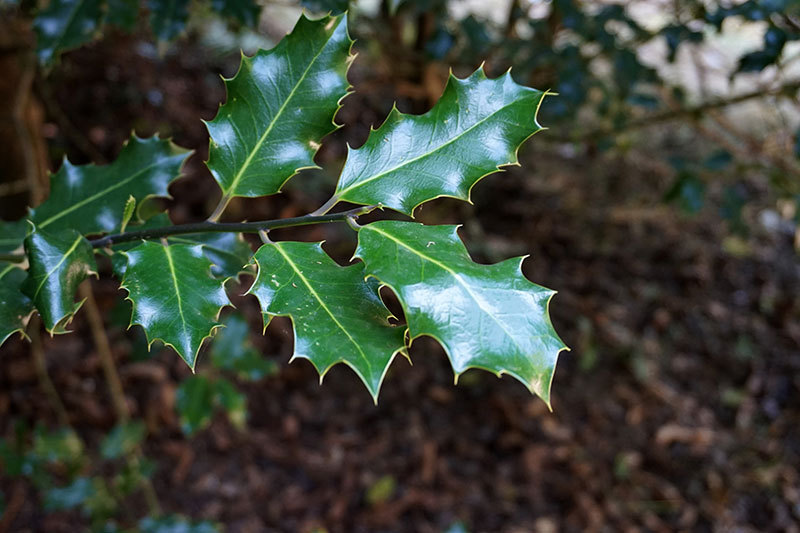Ilex aquifolium, the European holly that is in front of you, is a shrub of the family Aquifoliaceae. The specific epithet aquifolium refers to the needles (of the Latin acus) or thorns that surround its leaves (in Latin folium). This biological adaptation is one of the main characteristics of this plant. In fact, you can easily distinguish it from the fact that the leaves shine when the sun hits them, and are usually protected from herbivores by a row of thorns that surround their periphery. These plants are dioecious. It means that they have separated sexes in different individuals: there are male plants and female plants, something infrequent between flowering plants that usually present the male and female sexual structures grouped in the same individual and in the same flower (hermaphrodite flowers). In winter, the female trees produce fleshy red fruits that serve as food for many frugivorous animals. These animals could function as efficient dispersers of seeds, when fed with these fruits, swallow their seeds and excreting them far away from the holly in which they were collected and the seeds germinate. Look at the birds that roam this area. Try to see them eating! Moreover, although they are harder to see, many carnivores such as foxes, mustelids such as martens or even wild boars can also feed on these fruits during the winter.
The seeds of this species also delight many rodents. Look under the tree to see if you can find seeds manipulated by them!
It is said that holly trees constitute a true ecosystem because in their shadow inhabit, a high number of species of animals that interact with these plants, although at first glance it does not seem like it. These trees, as well as food for many frugivorous animals and rodents, also give shelter to many wildlife, protecting it from predators or extreme temperatures in winter, under a very dense foliage.
This species, which requires humid and shady environments, usually appears in the interior of forests such as beeches or oak forests, although sometimes dominates these environments. How do they get it? Thanks to the thorns that surround their leaves, they are able to inhabit areas with a grazing regime or herbivory by wild ungulates somewhat intense. This characteristic of its leaves, the spines, favors the expansion of species like the holly to the detriment of other trees like the oak or the European oak, without adaptations against herbivory.
Now you can imagine that where there are European holly, there will also be animals related to this plant. Pay attention to see them!
Nature is better understood if we understand the relationships that occur between organisms!
